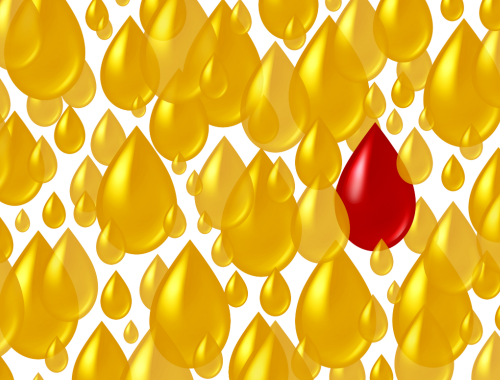Difference Between Blood in Urine and Menstrual Blood
Menstrual blood and urine blood are distinct in their origins, hues, cycles, and causes. Menstrual blood is a normal part of a woman’s reproductive cycle, but hematuria could be a sign of a problem with the urinary system. If you see blood in your urine or are worried about your menstrual flow, it’s crucial to see a doctor for a precise diagnosis.

Blood in urine
A variety of conditions, including infections, kidney or bladder stones, trauma, renal disease, urinary tract damage, and other ailments, can cause hematuria. Since hematuria is uncommon, it is typically cause for alarm. If you notice blood in your urine, you should seek medical attention right once in order to determine the underlying cause of the issue.

Menstrual Blood
Bleeding during the menstrual cycle is a normal physiological event for women who are of reproductive age. It is a result of hormonal changes in the menstrual cycle and is a part of the shedding of the uterine lining. Menstrual bleeding is a normal part of the menstrual cycle and typically lasts two to seven days for women. Usually, it takes place every 21 to 35 days.
Similarity
In both conditions, blood comes out.
Difference between blood in urine and menstrual blood
Definition
Blood in urine
Hematuria, or blood in urine, is caused by the kidneys, ureters, bladder, and urethra, which make up the urinary system. Hematuria can be caused by a variety of underlying medical conditions, such as kidney stones, bladder infections, urinary tract infections, and more serious illnesses including kidney disease or cancer.
Menstrual blood
Women release menstrual blood, which originates from the uterine lining, during their monthly cycle. It is a common and organic part of the menstrual cycle and affects women who are of reproductive age.
Causes
Blood in urine
Blood in urine also termed as hematuria condition are caused by different reasons like urinary tract infections (UTIs), kidney stones, bladder or kidney infections, trauma to the urinary tract, urinary tract tumors, blood-clotting disorders, or medications that affect blood clotting.
Menstrual blood
Menstrual blood is the blood that is shed from the lining of the uterus during a woman’s menstrual period (menstruation). It is a normal and natural part of the menstrual cycle.
Pattern
Blood in urine
Hematuria does not follow a regular monthly cycle and can occur at any time. It is usually not associated with pain, discomfort, or other symptoms, unless there is an underlying condition causing it.
Menstrual blood
Menstrual bleeding typically occurs in a cyclical pattern, with most women experiencing it approximately once a month. The menstrual cycle lasts around 28 days, although it can vary from person to person.
Color
Blood in urine
The color of blood in urine can range from pink or red to brown, depending on the amount and age of the blood. Fresh blood tends to be brighter red, while older blood may appear darker.
Menstrual
The color of menstrual blood can range from bright red to dark brown over the course of a period. It may also contain small clots, which are typically normal.
Summary
The points of difference between blood in urine and menstrual blood have been summarized as below:

FAQ:
Does menstrual blood and urine come from the same place?
It is untrue that the body does not remove period blood and urine from the same place. The urethra, which has sphincters and can be controlled, is where urine is released, whereas the vagina, which lacks sphincters, is where period blood exits.
Why is there blood in my urine but no period?
Hematuria is characterized by the presence of blood in the urine. The most common causes of hematuria are infections, kidney problems, or traumas. It is different from the blood that is shed as a result of monthly period cycle in females.
Why is there period blood when I wipe but not on my pad?
You may notice spotting for a few days before to your period as the uterus gets ready to shed its lining. Your period’s end may cause the bleeding to gradually stop. You might see stains on your underwear or blood on your toilet paper throughout the day.
Is it normal for toilet to fill with blood on period?
It’s common to get blood clots on your tampon or in the toilet when you’re menstruating. They appear when you have an extremely heavy flow and your body is losing uterine lining too quickly for the natural anticoagulants that normally break up clots before they leave your body to keep up.
What does period blood look like in the toilet?
As your period begins, the color of the blood is red, and as it ends, it becomes brown or black, depending on the length of time it takes blood to leave the body.
What does period spotting look like on toilet paper?
Any light bleeding that occurs outside of your regular menstrual cycle is referred to as spotting. Usually, it’s not a big deal. As the name implies, it resembles little pink or red dots on your underwear, linen, or toilet paper.
- Difference Between Global Warming and Greenhouse Effect - May 18, 2024
- Difference Between Vaccination and Immunization - March 3, 2024
- Difference Between Selective Mutism and Autism - February 25, 2024
Search DifferenceBetween.net :
Leave a Response
References :
[0]Bolenz, C., Schröppel, B., Eisenhardt, A., Schmitz-Dräger, B. J., & Grimm, M. O. (2018). The investigation of hematuria. Deutsches Ärzteblatt International, 115(48), 801.
[1]Critchley, H. O., Babayev, E., Bulun, S. E., Clark, S., Garcia-Grau, I., Gregersen, P. K., ... & Griffith, L. G. (2020). Menstruation: science and society. American journal of obstetrics and gynecology, 223(5), 624-664.
[2]Ingelfinger, J. R. (2021). Hematuria in adults. New England Journal of Medicine, 385(2), 153-163.
[3]Image credit: https://www.canva.com/photos/MAEe278f90o-menstrual-pad-with-red-blood-on-it/
[4]Image credit: https://www.canva.com/photos/MADE5RZ6IAg-blood-in-the-urine/
